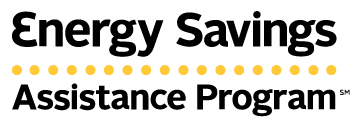An Interview with Expert Energy Advisor Drew Spindler
An energy assessment provides a comprehensive picture of your building’s existing conditions and potential for improvement. A dedicated Energy Advisor conducts the assessment of your property’s common areas and serves as your main point of contact. Beyond the energy assessment, they guide property staff through participating in the Multifamily Energy Savings program.

The assessment identifies equipment upgrades that may be covered by the program at little or no cost, helping to reduce energy use and enhance living conditions for residents. The assigned Energy Advisor will conduct the energy assessment and develop a report that details the equipment within the property’s common areas that are eligible for incentives through the program. All Energy Advisors have completed program-specific training and most have specialized certifications, such as the Building Performance Institute’s Building Analyst certification.
We sat down with Drew Spindler, one of the program’s Energy Advisors, to get an in-depth look at the energy assessment process. He says meeting with property owners and staff to conduct the energy assessment is his favorite part of the process.

Drew Spindler, Energy Advisor
According to Drew, “not only does the assessment give me [the Energy Advisor] the opportunity to collect the data firsthand and answer questions, but it also enables me to foster a more collaborative relationship with customers. Energy assessments allow me to go out and meet the property teams and gather accurate information to help property owners better understand equipment efficiency.”
Preparing for an energy assessment takes a little coordination between the property team and the Energy Advisor. After customers meet the program requirements and fully enroll, an Energy Advisor will connect with the property point of contact to schedule their energy assessment. The Energy Advisor will ask customers to provide a site map and details about the property so they can create an itinerary and come to the property fully prepared.

As Drew explains, “The audit itinerary is shared with the customer once a property is fully enrolled, providing a step-by-step overview of everything the customer will encounter on their scheduled site walkthrough. We also collect site maps and confirm customer processes for unit access well in advance of the energy assessment. In short, these pre-onsite activities lay the critical foundation for everything we do in the program.”
We asked Drew a series of common questions about energy assessments.
Ready to lower energy usage and upgrade equipment?

Energy assessments are an essential tool for property owners seeking to upgrade their properties with the Multifamily Energy Savings program. These assessments thoroughly evaluate your property’s equipment and systems, providing targeted recommendations for program-supported upgrades. The guidance from an Energy Advisor ensures you have support at every step of your energy journey.
For Drew, this is an extremely gratifying process. He explains that “it’s really rewarding to see the properties before they’ve received any treatment from the program and then have the opportunity to go back to see all of the new equipment once the project is complete.” He adds that property owners and residents are “generally very happy with the results.”
By investing in energy efficiency, you’ll reduce costs, save energy, and enhance residents’ living conditions. If you’re interested in discovering how the energy assessment and savings opportunities can benefit you and your residents, don’t wait. Fill out an interest form to learn more about how the Multifamily Energy Savings program can help you achieve your goals.



